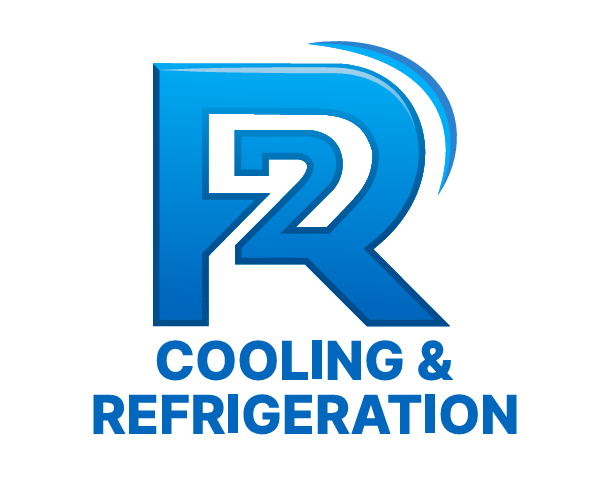Common Signs of Refrigeration System Failure (and What to Do Next)
- 2R Cooling & Refrigeration

- Aug 8
- 3 min read
Updated: Sep 9
A reliable refrigeration system is the backbone of any food service or retail operation. From walk-in coolers in grocery stores to display cases in restaurants, unexpected failures can lead to spoiled inventory, lost revenue, and damaged customer trust. Spotting early warning signs—and knowing exactly what to do when you see them—can save you time, money, and headaches down the line.

1. Uneven or Inconsistent Temperatures
What You’ll Notice
Hot spots in a walk-in cooler or freezer
Fluctuating temperatures on the thermostat display
Product close to coils freezing while other items remain warm
Why It Matters
Temperature swings allow bacteria to thrive, spoilage to accelerate, and energy costs to spike as the compressor works harder.
What to Do Next
Check Door Seals: Ensure gaskets are clean and undamaged. A poor seal lets warm air in.
Clean Coils: Dust and grime on evaporator or condenser coils diminish heat exchange.
Schedule a Temperature Audit: If DIY fixes don’t resolve the issue, book a professional check to test refrigerant levels and airflow.
2. Ice Buildup on Evaporator Coils
What You’ll Notice
Frost or thick ice layers on coil surfaces
Dripping water inside the unit when ice melts
Compressor running frequently but failing to maintain cold
Why It Matters
Ice acts as an insulator, blocking cold air flow and forcing the system to overwork—ultimately leading to compressor burnout.
What to Do Next
Defrost the Unit: Turn off power and let ice melt naturally (avoid chipping away ice).
Inspect Drain Line: A clogged condensate drain can exacerbate icing issues.
Call in a Technician: Persistent icing often signals low refrigerant or a faulty defrost timer—both require certified service.
3. Strange Noises or Vibrations
What You’ll Notice
Loud banging, rattling, or clanking sounds
High-pitched squealing or hissing near the compressor
Excessive vibration in the compressor or fan assembly
Why It Matters
Unusual sounds can point to failing motors, loose components, or refrigerant leaks. Ignoring them risks catastrophic failure.
What to Do Next
Tighten Loose Parts: With power off, check mounting bolts and fan blades for looseness.
Lubricate Moving Components: Some fan motors require periodic oiling.
Schedule Emergency Service: Noises that persist or worsen need immediate professional diagnostics to prevent full system breakdown.
4. Rising Energy Bills
What You’ll Notice
Month-to-month electricity costs climbing without a clear reason
Compressor and fans running almost nonstop
Unit cycling on and off rapidly (short-cycling)
Why It Matters
Degraded efficiency strains your budget and indicates internal stress—often from low refrigerant, a dirty condenser, or failing components.
What to Do Next
Inspect Filters and Coils: Replace filters and clean coils to restore airflow.
Monitor Runtime: Use a plug-in energy monitor to track how often your system runs.
Book an Energy Audit: A technician can perform a full performance test, identify inefficiencies, and recommend corrective actions.
5. Visible Refrigerant Leaks or Frost on Lines
What You’ll Notice
Oily residue or wet spots near piping connections
Ice forming on suction lines
Decreased cooling capacity alongside icing
Why It Matters
Refrigerant is both essential and regulated. Leaks harm the environment, damage equipment, and violate safety standards if left unchecked.
What to Do Next
Power Down Safely: Shut off the unit at the breaker to prevent compressor damage.
Avoid DIY Recharge: Adding refrigerant without repairing leaks violates EPA regulations and voids warranties.
Contact a Certified Refrigeration Specialist: They’ll perform a leak test, repair piping, and recharge to the correct pressure.
Proactive Steps to Prevent Future Failures
Regular Preventive Maintenance: Enroll in a service plan that includes quarterly inspections of coils, filters, belts, and controls.
Keep Surroundings Clear: Maintain a 2-foot clearance around outdoor condensers and avoid stacking inventory too close to indoor coils.
Train Staff on Early Detection: Educate your team to recognize temperature fluctuations, unusual sounds, and condensation issues before they escalate.
Install Remote Monitoring: Automated alerts for temperature excursions and system faults allow you to act before losses occur.

Ready to Protect Your Inventory?
Recognizing early warning signs—uneven temperatures, ice buildup, and unusual noises—lets you address refrigeration issues before they cost you time and money. Implement simple checks, keep coils and drains clean, and partner with certified technicians for diagnostics and repairs. Act now to protect your inventory and ensure continuous, reliable cooling with 2R HVAC/R.




Comments